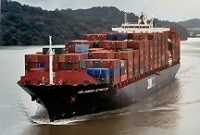According to Dun & Bradstreet the main sectors likely to be affected in Israel are: entertainment, restaurants, bars, cafיs, and tourism
Dun & Bradstreet published last week a forecast estimating that the economic damage to Israel from H1N1 Flu (Swine Flu) could amount to NIS 35 billion.
According to Dun & Bradstreet, a general contagion will lead to a 4-5% drop in GDP, amounting to NIS 28-35 billion, in Israel, and a 3-5% drop in global GDP.
Novel H1N1 (referred to as “swine flu”) is a new influenza virus causing illness in people. This new virus was first detected in people in the United States in April 2009. This virus is spreading from person-to-person worldwide, probably in much the same way that regular seasonal influenza viruses spread. On June 11, 2009, the World Health Organization (WHO) signaled that a pandemic of novel H1N1 flu was underway.
The main sectors likely to be affected in Israel are: entertainment, restaurants, bars, cafיs, and tourism.
There will also be gainers. The biggest will probably be drug companies that produce inoculations against the virus.Take away food and film hire companies also stand to benefit.
The calculation of the direct economic damage includes:
The direct cost derived from the expected lost working days,
Damage (direct & indirect) to certain specific industries, and
The medical cost of treating the sick
Each year during the flu season, about 9% of the workforce take leave from work, and about two million working days are lost, costing about NIS 1.2 billion (including medical costs).
The Ministry of Health estimates that a quarter of the population will contract swine flu this winter.
Dun & Bradstreet estimates that the number of working days lost will be 2.5 times the usual number, since the age group most at risk is those aged 15-49, so that the effect of the flue will be worse than in a normal season. Parents with sick children will stay at home, risking catching the flu themselves, while workers who present initial symptoms will take sick leave as a precaution.
This means that the cost of lost working days and medical treatment is liable to reach NIS 3 billion.
In addition, some workplaces will have to isolate healthy workers, for fear of them becoming ill, which would result in a shut down of the office or factory.
It is also possible that if infected, whole geographic areas will be sealed off.
D&B: H1N1 Flu could cost Israel's economy NIS 35b
According to Dun & Bradstreet the main sectors likely to be affected in Israel are: entertainment, restaurants, bars, cafיs, and tourism
17.08.09 / 00:00
•
More articles that may interest you

July car sales jumped 42% compared to July 2008

July tax revenues hit highest level in two years

Agrexco: export of organic fruit, vegetables up

Israel Corp. to provide a US$350m emergency cash to rescue Zim

MOU signed between Israel's Customs Directorate and Azerbaijan State Customs Committee

Israel - Indonesia chamber of commerce was set up to boost bilateral business ties
More news from Industry & Trade Section
>CBS: Q2 exports to US up/27.07.09
>BOL: State of the Economy Index up 0.2% in June/27.07.09
>PM's Office: Joint Govt. Private Sector Fund for Investments in the Minorities Sector/27.07.09
>Israel to implement ISPM 15 wood packaging treatment rules on Oct. 1/20.07.09
>Jerusalem is one of the most preferred destinations among tourists/20.07.09
>1H diamond exports dropped 58%/13.07.09
>2009 Global Enabling Trade Index (ETI): Israel in 29th place/13.07.09
>In 2010 Israel to become member of the OECD/06.07.09
>Deutsche Bank: Israel's GDP 2% up in 2010/06.07.09
>Israeli drug exports: 23% up despite global financial crisis/29.06.09
